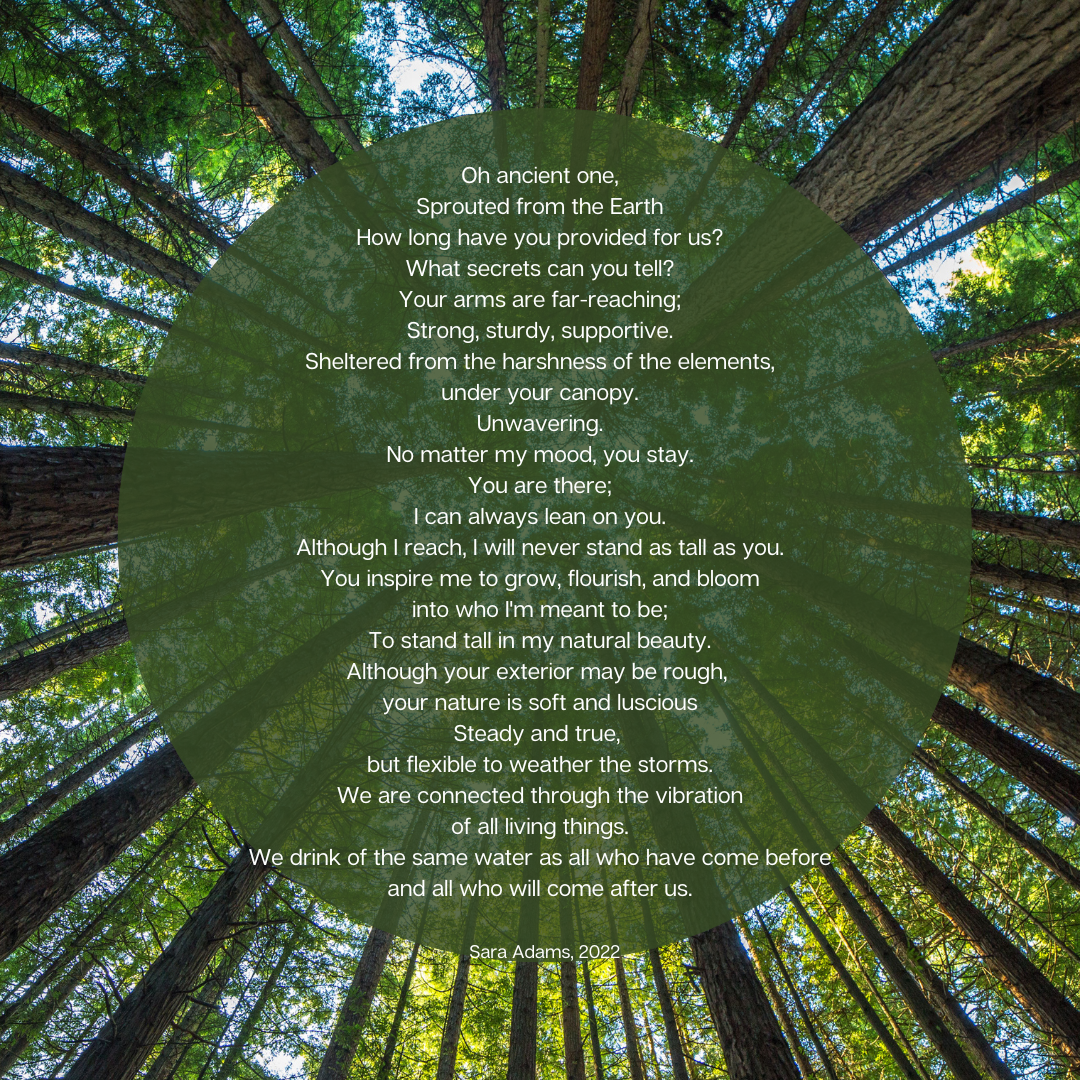Forest Bathing
May 15, 2023
Spring is a great time to get out and explore nature… we often start to feel the effects of cabin fever after being cooped up throughout the winter and the new growth and warmer weather attracts us to the great outdoors.
Anyone who has spent quality time outdoors knows nature to be a restorative environment. There is a continuously expanding wealth of evidence that being in natural environments has positive effects on mental health and well-being, including a reduction in stress, anxiety and depression. In addition, nature exposure has been shown to have a positive effect on self-esteem, mood and confidence.
Human connection with the natural environment is essential for maintaining mental health and well-being. As an increasing number of people now live in urban areas, with fewer opportunities to interact and make contact with the natural world, many researchers posit that this lack of connection to the natural world is a major contributing factor to the increase in feelings of isolation, anxiety, fear, anger and depression. “Nature-deficit disorder” is used to describe the consequences of human separation from direct contact with nature. In our increasingly urbanized world, we tend to interact only with humans or human creations and have forgotten the importance of connection and reciprocity with the natural world. This separation from the natural world has been shown to result in undeveloped emotional and social skills and has been linked to a variety of social psychological issues. While nature-deficit disorder affects all humans, it can be especially noticeable in the development of children and youth. The time that children and youth spend in the natural world has decreased by ninety percent over the last thirty years across North America and parts of Europe and this has been shown to be one of the causes of childhood stress, anxiety, depression, among other childhood diagnoses.
Scientists have found that being in nature can reduce levels of stress hormones in the body. More generally, researchers have found that being in nature can improve mood, attention and problem-solving skills. In Japan it’s called shinrin-yoku, “forest bathing.” It’s the practice of taking in the atmosphere of the forest using all your senses, slowly and mindfully. Some studies have also suggested that phytoncides (natural chemicals released by trees) can boost the immune system.
According to a growing body of evidence, mental health and ecosystem health are deeply interrelated. Research shows that there is a direct connection between human wellness and environmental sustainability: connection with nature has been shown to lead to an increased appreciation for the role of nature within our lives and the desire to safeguard the environment, leading to the reciprocal health of both humans and nature – as we are dependent on nature as much as nature is dependent upon us. We must remember that we are a part of nature, not separate from it. Contemplating the ways in which trees and people mirror one another brings us into alignment with the reality that we are part of Mother Nature.
Walking in a forest can be a meditation, the interweaving lives of all living creatures and the planet on which we all take root and reach for the sky. To get started in this practice of Forest-Bathing, try my 5 Senses Walking Meditation (published last month) while taking a stroll through the woods or on a local trail. Bring a small backpack with water and a journal (and maybe a snack if you think you’ll be there for a while.) The key is to tune into your senses as you walk through the woods… What do you see? What do you smell? What do you hear? Is there a taste to the air? Hug a tree, feel the bark. Maybe a particular tree seems to call to you… walk to it and attempt to “communicate” with it. Can you feel its pulsating energy? What type of energy does it seem to be giving off? If you’re feeling really brave, let its energy move you… literally moving your body with the energy of the tree. Think about the roots reaching deem down into the earth and the branches reaching high towards the sky. In the same way, we can envision ourselves as tree-like beings, imagining that we have roots reaching down into the earth; energetic strands that keep us connected to the earth. At the same time, the crowns of our heads lift and open to receive nourishment from above. Just like a tree, we seek the sunshine and water we need to survive and thrive. Take in the entirety of the tree.
Here is a poem I wrote after communing with a tree… break out your own journal in the woods and see what words or images come forward for you.

References:
Chavaly, D., & Naachimuthu, K. P. (2020). Human-nature connection and mental health: What do we know so far? Indian Journal of Health and Wellbeing, 11(01). https://doi.org/10.15614/ijhw.v11i01.18
Levine, S. K. (2022). Ecopoiesis: A new perspective for the expressive and creative arts therapies in the 21st Century, Jessica Kingsley Publishers.
Moula, Z., Palmer, K., & Walshe, N. (2022). A systematic review of arts-based interventions delivered to children and young people in nature or outdoor spaces: Impact on nature connectedness, health and Wellbeing. Frontiers in Psychology, 13. https://doi.org/10.3389/fpsyg.2022.858781
Naor, L., & Mayseless, O. (2021). Therapeutic factors in nature-based therapies: Unraveling the therapeutic benefits of integrating nature in psychotherapy. Psychotherapy, 58(4), 576–590. https://doi.org/10.1037/pst0000396
Stay connected with news and updates!
Join our mailing list to receive the latest news and updates from our team.
Don't worry, your information will not be shared.
We hate SPAM. We will never sell your information, for any reason.

